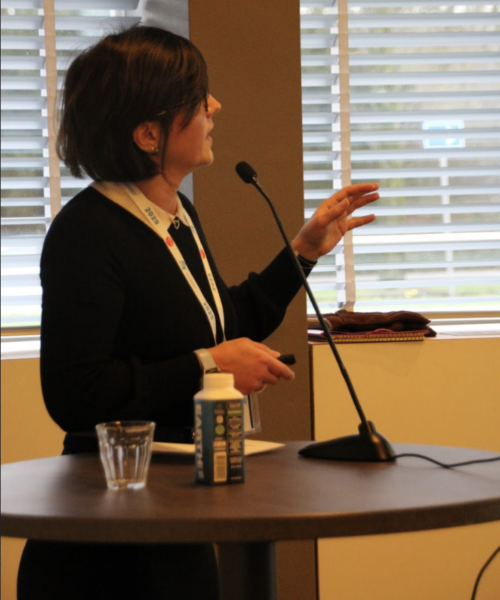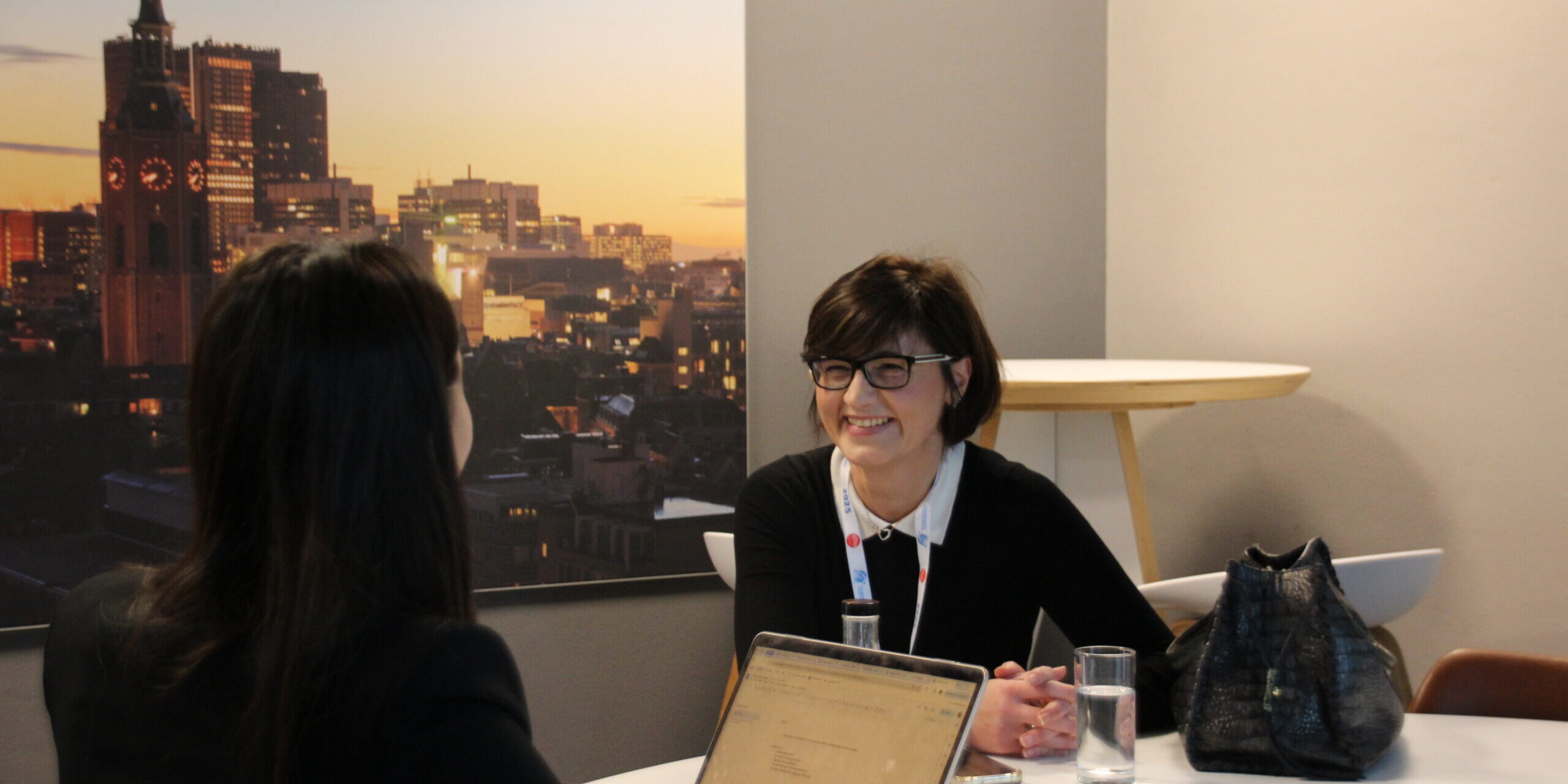Exploring Misinformation and Disinformation in SPC-2: Special Panel by Daniela Martea
By Jina Song
Photography by Anna Plunkett
On Wednesday afternoon, AI data expert Daniela Martea spoke at the SPC-2 (Special Conference Conference on AI Sub-commission 2). Martea is a member of Women in AI, an organization of 60 women focused on achieving gender equitability in artificial intelligence. As the Amsterdam city lead of Women in AI, Martea organizes monthly meetings for AI-themed discussions. Martea is also currently working in Shell as a data management and transformation expert which has allowed her to garner valuable insight into the world of AI.
How did the journey begin?
Martea is of Italian heritage and Dutch nationality. As a mother of two, her numerous passions include CrossFit, tennis, and of course, data. Martea has been involved in data components for decades. “I was always curious about AI and data, and I always looked for ways to simplify my work,” said Martea. Throughout searching for smarter and faster ways to work, Martea zeroed in on artificial intelligence, machine learning, automation, and robotics.
Martea dotted the presentation with engaging games for the delegates: “Guess which photos are not AI-generated?” she asked. After four (enthusiastic yet incorrect) guesses, she revealed that only one photo in the game was not generated by artificial intelligence. With numerous audience engagement discussions, deepfake spotting challenges, and more, the visit was filled with interaction.

Stances on the agendas: A Speech Snapshot from the Delegation of Martea
1. The question of Artificial Intelligence regarding misinformation and disinformation
If Martea was a delegate, she would be the main submitter for a resolution on this agenda. Her expertise in artificial intelligence in this field runs throughout individual, national, and international levels. At its core, Martea hopes to raise awareness of the dual possibilities of AI. Tapping into her statistics background, Martea explains that “negative information has 6x more impact than positive information.” This means careful monitoring of harmful artificial intelligence policies should be prioritized. “You have to be aware, and adopt a critical mindset,” Martea emphasizes.
2. The use of Artificial Intelligence in order to reduce the social, digital, and economic divides
As a former economics major, Martea emphasized the deeply rooted social aspects of artificial intelligence. Martea re-emphasized the need to embrace “a critical mindset to turn the threat around and into something positive.” We should focus on the aspects of AI which “adds value, instead of deepening a division. It’s extremely powerful, and we should leverage it,” says Martea.
She highlighted the importance of regulating artificial intelligence and using it for good.
3. Measures to develop Artificial Intelligence for the benefit of global development [education]
While Martea is “a bit far from the education system,” she believes “we can leverage AI and what it brings.” AI should be used not because humans are getting lazier, but to leverage the thresholds it can break. Even within educational activities like Model United Nations, she says, “Yes, you can use it. But you need to retain your own signature and personality.”
What can delegates take away?
It’s undeniable that artificial intelligence is just like what Big Data was like 20-30 years ago—seen as a threat to humanity. However, turning the table to embrace the technology, and ensuring it works for you and does not replace you is crucial. “Don’t allow AI to overcome your role,” Martea emphasized. “It’s normal that throughout development, you encounter a subset of impediments. It’s the same in AI like in everything else.”
However, these changes begin at institutional levels and policies. “At a bigger scale, you need to balance the value between the problem AI is going to solve and see it from a holistic point of view. It’s like peeling an onion,” Martea said. Protecting a range of individuals is critical to achieving accountable AI. For instance, artificial intelligence can be used to protect women from abuse revitalize underdeveloped countries, or lower child abuse. “You leverage physical aspects, social aspects, and technological aspects,” said Martea. Only by combining all these factors—unit testing, embedding functions, and more—can humanity prevent artificial intelligence from becoming an impediment rather than a tool.








